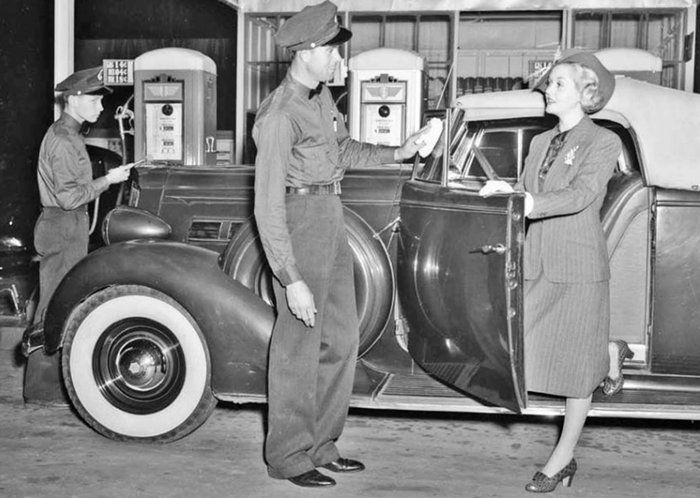
BodyWorld is a book of uncompromising, surpassing, mind-melting weirdness, from its high-concept design to a premise that sounds like it was conceived by a sci-fi-reading, airplane-glue-sniffing high schooler circa 1963. It's set in the future—but its action takes place in a small planned community called Boney Borough, in most regards a perfect throwback to 1960s suburban America. It's about drugs, love, and telepathy; it maintains only a cursory visual consistency; it's meant to be read from top to bottom, as it would have scrolled down a computer screen in its original format. It is completely unhinged, and just about brilliant.
So that's what I had to say about Dash Shaw's new book in this week's paper. (For more elaborate participial adjectives, read the whole review here.) Shaw first published BodyWorld as a webcomic, and Pantheon just released it in a really beautiful, unconventional print volume—it reads vertically, like the webcomic does. (The most comfortable way to read it ended up being by resting it on a bartop, which was okay by me.) I think the book is around $30, but you can read the webcomic for free right here. I had an hour-long conversation with Shaw about telepathy, onomatopoeias, and the comics of the future—the transcript is after the jump.
Shaw is reading tonight at Powell's on Hawthorne, 3723 SE Hawthorne, 7:30 pm.
You say on your website that the print version of BodyWorld has additional pages and images and that you re-drew and painted sequences in a way that favors a print format—what does that mean, exactly, favors a print format? What kinds of things were you thinking about?
There are a lot of new things in the book. When I was doing it online, I was serializing it as I did it, in weekly installments, on a self-imposed schedule. Having it in print allowed me to go back and change things and add more pages. You know, for mainstream comics, they’re serialized monthly and so you don’t have the opportunity to go back and change something for the printer.
[For the web comic] I wanted to give myself a deadline and a schedule and have pages up weekly, but when it was going to be printed I wanted to go back and rewrite things and redraw things. The website was more than the first draft, there were stages before the website, but I realized that I had the opportunity to go back and change things. Also, things look different obviously on the computer from print. A lot of the colors I used I used because I thought they looked good on the computer, especially a cyan color that I use a lot that looks really amazing when it’s illuminated from behind on a computer screen. A lot of flat colors look better [on a computer screen], nontextured colors that are done basically by drawing the shape by hand, then paint bucketing on the computer. When they’re printed, I like things that have more of a texture to them and look more hand done, more like you’re looking at the actual page, so there can be a buildup of paint or whatever. So I went back and painted on a lot of the pages I had done before to give them another layer. Because the book has a lot of juxtapositions, one thing that I like is seeing a painted, textured color next to a flat color.
What about the formatting?
The book is formatted based on how it read on the internet. It has that vertical orientation. The way it was printed was informed by how it was online. Which usually isn’t the case—usually people put things online based on how they’ll eventually look in print. In this case, it was opposite, the print version followed the web version.
Are the forms competing?
I don’t think so. I think it’s interesting, in kind of a nerdy, formal way. Also it makes sense because I like reading comics that are online, and I also like having a printed book. I think if you’re someone who would spend that much time reading it online, you probably like it enough that you want to get the book for the additional material, and just to have it. I think that having things online only helps the book. And that feels like that’s what’s going on now, and what’s going to be the future. I spend a lot of time reading scans of old comics, scans of ’50s and ’60s comics, and I don’t think it’s going to be that long until people start posting scans of comics that were done just a few years ago online for free. I think it makes sense to incorporate it. A lot of present comics are sort of rooted in the past, in newspaper comics that don’t exist anymore—I don’t have that impulse. I’m interested in comics that are about the present time, and that includes the internet.
The book is set in the future, but it’s in this almost Truman show-esque, 1960s microcosm, where they talk about hovercrafts and stuff but you don’t get to see them until the very end. What drew you to that sort of retro vision of the future?
The idea is that, this is an experimental city, so maybe outside of this town, it looks like Sky Captain and the World of Tomorrow, but here it just looks like Richmond, Virginia. It’s kind of an amalgamation of the future and the present time, or 2007-2009 when I was drawing it, because that time felt and the present day feels very futuristic.
What about present feels futuristic to you?
Everything! The internet, iPhones, all of these cultures arguing with each other on the internet and coming together… there are a million things.
You and I are about the same age, and we’re the last generation to have grown up without this stuff.
I think to younger people it probably feels more normal. And what’s interesting is they’re probably growing up reading webcomics before comics—like to me webcomics is this kind of futuristic thing, but that’s how they imagine the future now.
Your technique of writing in words for sound effects and actions is really effective, is there a guiding principle that determines when you use that?
Thanks, and it’s just intuitive. Like everything in comics, it can be used for a lot of different things. Sometimes it can be to emphasize something, which is basically just saying something twice. If you have rain hitting pavement and you write “rain hitting pavement,” it maybe connects it to other things in the book, and it’s more like freezing the moment. In other cases it can be like an onomatopoeia. In Japanese culture they have very specific onomatopoeias. Instead of the sound that water makes being “drip drip,” they have a very specific sound for water hitting the sink—it makes it richer, sensorily. Also sometimes I’m not opposed to writing something just to explain what is happening. If I don’t feel like breaking down something or accurately explaining something in the pictures, I think it’s ok if I just write, “He’s taking out his wallet here.” I don’t think that’s breaking a rule.
Your take on telepathy is interesting, how it’s not just “reading thoughts” but also experiencing feelings and seeing images. Can you explain how you came to conceive of it that way?
I’ve always thought telepathy would be not just reading minds, but knowing what it’s like to be inside [someone else’s] body. So if your mind is receiving information from the other person’s mind, then your hand would receive information from the other person’s hand. It’s more of a full-body experience than a secret whisper. It’s just what I think telepathy would be like. I didn’t really research telepathy in fiction very well. I would get books on telepathy, little pamphlets and things, but I was a little disappointed in how not seriously the pamphlets would take it, and how it would be grouped with things like teleportation, which have nothing to do with telepathy. I was always disappointed, like if Professor X was communicating with someone it would just be words, or in a movie it would just be someone saying something that was really uninhibited. It was really fun to think about all the different stages, and how telepathy would work—that was just something I was doing in my free time, and then I made this comic and story to explain how I think telepathy would work from the perspective of the characters experiencing telepathy. A lot of the plot points in the book were created around the idea of how telepathy would happen. I don’t think people could train their minds to experience telepathy, I think it would have to come from somewhere else—that’s why there’s a plant from the aliens. I think you could study people and become very sensitive and have some kind of mild experience, but nothing close to the experience people have in BodyWorld. In BodyWorld when people gain telepathy they gain hive mind, which I think is what would happen if there was mass telepathy. It wasn’t in the book because the book ends with Paulie’s story, but I think years after Paulie’s story ends that telepathy would be so normal that people would create walls and barriers, that it would basically be like now, how people find ways of shielding what they’re thinking and feeling from other people. But I think that would take a long time.
Where does the drug come in?
It isn’t about a drug that actually exists. It would be disorienting to experience telepathy, so I tried to make the sequences disorienting but have a logic to them. I guess I downplay the drug part because I wasn’t just drawing trippy things—I tried to think about what [the characters] would receive in what order and how it would be presented to them. So I wasn’t like, just getting stoned and drawing random things. It’s okay if it’s druggy fiction, I just don’t want people to dismiss the telepathy story. Though I guess I’m not going to be respected for either one, so that probably doesn’t matter.
Did you base those drug scenes on any specific experiences?
It sounds really weird, but I was really into figure drawing. After I graduated I went to Richmond and I worked as a figure drawing model to stay connected to that practice. I think if you get really good at figure drawing you can kind of channel what it would be like to be inside another person. If you are a figure-drawing model you spend a lot of time having really self-conscious head trips—you’re sitting there and you feel your ass cheek going numb, or the blood flowing into your arm… that was my main influence.
If Paulie was a movie character I think he’d have to be played by Elliot Gould. Was he inspired by anyone in particular?
A lot of the characters came from my sense of humor. Seeing different kinds of people interacting with each other… you know, like Paulie is much funnier when he’s with Billy, because the two chacters are really different, but he isn’t based on a real person .
The book as a whole is really funny.
Thanks. It’s something I’ve noticed when I talk to people about it, if you have a similar sensibility it’s obviously really funny, but if you don’t… It’s not like it’s failing at being funny, it’s just that you don’t even think that it would be funny. But I mean, I was laughing the whole time. I drew it to amuse myself. That was the main impulse, was entertaining myself. Some of the things in BodyWorld are pretty lowbrow humor.
Yeah… like that pooping scene. [A scene in which Paulie gets a telepathic signal that someone he’s with has to use the bathroom-—eds]
I think that that scene’s funny —if you think about how your body get a message that you have to go to the bathroom, it can be very confusing….
The book is impressively intricate, between the diagrams of the town, and the rules of die-ball [a popular sport in BodyWorld]. Are cartography or gaming things you’re interested in?
It’s about creating a world. When I’m at the drawing table I want to be transported to this place. So I’d make these things, and then I’d just include them in the book because the book itself is a document of this world, this place. When you’re reading a book, if it’s a good book, you can feel really transported—like Lord of the Rings or something, you an feel like you’re in a completely different environment, in a way that I think is closer to installation art than looking at a single painting. When you’re looking at a painting you’re outside of it, but when you’re reading a book it’s like you’re immersed in it. At least when I’m drawing it, which I know is different than reading it, but when I’m drawing it I spend a lot of time in that place. I had to draw those panels. You read them in like a second. but I’m probably more in Boney Borough than the reader is—You read it, but I had to draw it.
What can we expect from you at your reading?
I don’t know what I’m doing in Portland. I think I’ll read maybe from BodyWorld, or sometimes I just put images on my thumb drive and talk about what I have, I kind of blab on about a single picture. Other times I just bring animations, because I’ve done animations for IFC, and of Bottomless and BodyWorld, and I’m working on a long animation now—and so at some of them we’ll have a projector and we’ll just talk about the animations.












